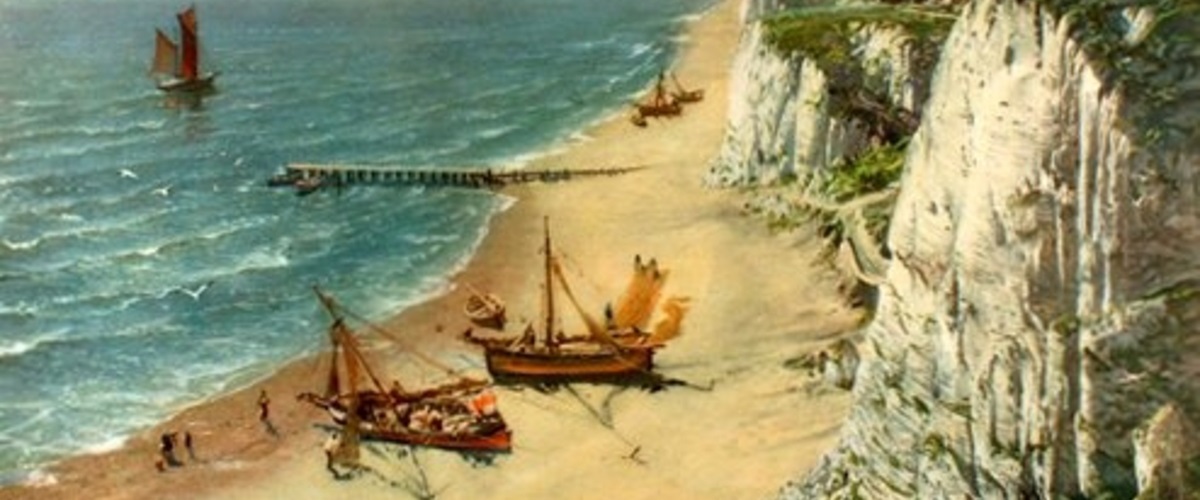Riptide Islands
Λασ Κοντρακορριεντεσ
The Riptide Islands (also known as Las Contracorrientes) is a pair of islands located north of Leandris and south of the Galisean Mainland. They were long uninhabited thanks to the namesake riptides that make navigating the channel between the two islands incredibly dangerous, and the high cliffs surrounding most of the rest of the islands.
The riptide islands have been settled in recent years as trade between the continents of Felora and Galisea have become much more routine. Thanks in large part to the relative inhospitality of most of its coasts, and its previous wildness, have made the lands a very attractive location for pirates and indeed, one of the few major pirate republics have made their homes within the channels of the Riptides.
Development of the islands is minimal, with only a few small scattered communities and a single major town marking the extent of its development, with the interiors poorly suited to agriculture on any meaningful scale.
Geography
The Riptide Islands consist of a pair of islands in the northern Yulan Ocean, separated by a narrow channel that serves as the primary means of accessing the interior of the islands. The Riptides themselves lie relatively close to the island of Leandris, and indeed a number of storms that are redirected by Leandris' central mountain range do indeed get redirected to the Riptides. The central channel of the Riptides have a peculiar tidal system that has only been mapped out recently, and indeed that only experienced sailors can successfully navigate without significant risk to their ships. Paired with steep cliffs on most non-channel facing coasts of the islands, the riptides are some of the most difficult to access stretches of land in the world.
The interiors and ocean facing coastlines of the islands experience significant winds and rains on a regular basis as a result of intense storms from the Yulan Ocean, which have weathered the cliff faces significantly only leaving the toughest stones relatively intact, and carving out more than a few small inlets, gullies and caves. The channel facing coasts are more sheltered, and subject to a more moderate climate. The islands themselves are relatively barren and bereft of most natural resources except for its relatively prime location for shipping.
Ecosystem
The Riptides possess two major terrestrial ecosystems. The first of these is that belonging to the seaward coasts and the interior of the islands. Thanks to the stormy climate, the area is quite verdant, but lacking in most large forms of plant life as the winds batter the islands. Rather, most of these areas are humid tropical scrubland though along the coast there are also cliff faces and narrow bands of sandy beach. The channel coasts, sheltered from the more extreme weather resemble tropical forested areas, with extremely narrow bands of rocky beach along the coast.
Ecosystem Cycles
The ecosystem of the riptide islands has two main seasons, called by the few native inhabitants the season of storms, and the season of winds. The season of storms, lasting for approximately one third of the year sees intense storms that wrack the islands and make sailing the channel virtually impossible. The season of winds is less intense, but still sees fierce winds blowing over the exposed portions of islands. These seasons of course, making intensive agriculture very difficult for most of the island's land area.
Localized Phenomena
The Riptide Islands are defined first and foremost by the anomalous tides in the channel between the two armies. These tides do have a regular, though complex pattern that is difficult to plot for casual navigators. As a result most pirate crews that favor the Riptides as a haven either stick to the seaward coasts, or have exceptional navigators in order to successfully get through the channel tides.
Fauna & Flora
The Riptide Islands possess little in the way of plant and animal life, with only a few dozen plant species, and only a few more animal species living on the islands. Thanks in large part to the harsh weather, most living things that do live in the area must be capable of moving to shelter or be quite hardy. As a result, the Riptides are perhaps most famous for their populations of small birds, tortoises, and stocky shrub life. There are rumors that a few Bronze Dragons might call the islands home, but this is, thus far unproven.
History
For most of the Riptide Island's history they went largely uninhabited, as the island's hostile climate made it unsuitable for any large scale inhabitation. However, the the flourishing of transcontinental trade, came the need for island communities to service ships traveling the, oftentimes tempestuous seas between Felora and Galisea. The first settlements on the islands were indeed trading posts meant to service merchant ships travelling from Aeilla and Gallaca and the northwest of Galisea. The arrival of pirates however, was longer lasting, with many establishing small holds in the inlets and caves along the coast. Over time, these pirates slowly drove out or took over most of the 'legitimate' settlers in the region, even establishing a fairly sizable town on the channel coast, Valecina that became one of the largest pirate settlements in the known world. Valecina has become the last major pirate haven in the Yulan Ocean as naval forces, especially from Artenos have begun to brutally supress piracy and destroy their strongholds in the area.


